Related Research Articles

St. Augustine is a city in and the county seat of St. Johns County located 40 miles south of downtown Jacksonville. The city is on the Atlantic coast of northeastern Florida. Founded in 1565 by Spanish explorers, it is the oldest continuously inhabited European-established settlement in what is now the contiguous United States.
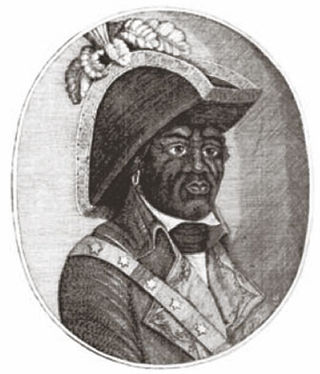
George Biassou was an early leader of the 1791 slave rising in Saint-Domingue that began the Haitian Revolution. With Jean-François and Jeannot, he was prophesied by the vodou priest Dutty Boukman to lead the revolution.

The St Augustine Town Plan Historic District is a U.S. National Historic Landmark District encompassing the colonial heart of the city. It substantially encompasses the street plan of the city as contained within the bounds of walls built between the 16th and early 19th centuries. The district is bounded by Cordova, Orange, and St. Francis Streets, and Matanzas Bay. It was designated a National Historic Landmark in 1970, although its boundaries were not formally defined until 1986.

Fort Mose, originally known as Gracia Real de Santa Teresa de Mose, and later as Fort Mose, or alternatively, Fort Moosa or Fort Mossa, is a former Spanish fort in St. Augustine, Florida. In 1738, the governor of Spanish Florida, Manuel de Montiano, had the fort established as a free black settlement, the first to be legally sanctioned in what would become the territory of the United States. It was designated a US National Historic Landmark on October 12, 1994.

Ximenez-Fatio House Museum is one of the best-preserved and most authentic Second Spanish Period (1783-1821) residential buildings in St. Augustine, Florida. In 1973, it was added to the National Register of Historic Places. It was designated a Florida Heritage Landmark in 2012.
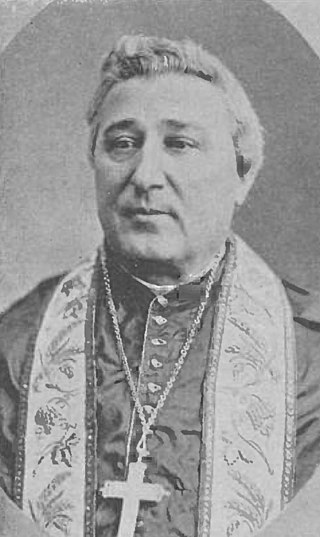
Anthony Dominic Pellicer was an American prelate of the Catholic Church. He was the first Bishop of San Antonio, serving from 1874 until his death in 1880.

Verle Allyn Pope, nicknamed The Lion of St. Johns, was a prominent Florida legislator, serving for 24 years in the Florida House of Representatives and the Florida Senate.
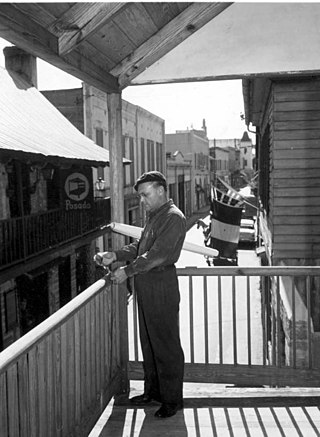
Albert C. Manucy was an author, historian and a Fulbright Scholar who specialized in Spanish Colonial Florida and the architecture of St. Augustine, Florida.
Felix F. de Crano was an impressionist artist in New England, St. Augustine, Florida, and Europe. He is listed as a Great Floridian.
Francisco de la Guerra y de la Vega was the governor of Spanish Florida between December 30, 1664 and July 6, 1671. He participated in the war against the British buccaneers who sacked and plundered the province's capital, St. Augustine in 1668. On May 29, 1668, St. Augustine was invaded by the English privateer Robert Searle of Jamaica. Searle's fleet had already captured St. Augustine's own frigate near Havana, as well as the situado ship from Vera Cruz carrying flour to St. Augustine. Searle's men marauded and looted the city, killing 60 of its residents.
St. Augustine, Florida, the oldest continuously occupied settlement of European origin in the continental United States, was founded in 1565 by Spanish admiral Pedro Menéndez de Avilés. The Spanish Crown issued an asiento to Menéndez, signed by King Philip II on March 20, 1565, granting him various titles, including that of adelantado of Florida, and expansive privileges to exploit the lands in the vast territory of Spanish Florida, called La Florida by the Spaniards. This contract directed Menéndez to explore the region's Atlantic coast and report on its features, with the object of finding a suitable location to establish a permanent colony from which the Spanish treasure fleet could be defended and Spain's claimed territories in North America protected against incursions by other European powers.

The González-Jones House is a historic home built during the First Spanish Period (1565–1763) in Saint Augustine, Florida. It is located at 56 Marine Street, one block north of the González–Alvarez House and the Saint Francis Barracks. This neighborhood includes nine colonial structures that survive in clusters along Marine and Saint Francis Streets. These buildings are all assumed to have been built after 1702, when the city was destroyed during a British siege.
Antonia Paula de la Resurreccion Bonelly, was a colonial woman of Spanish East Florida who was captured by Miccosukee Indians in 1802 and held captive for twenty-two months. Her rescue and ransom involved many of the major power players that defined relations in this period between the Florida tribes and the nations of Britain, Spain, and the United States.

The Oliveros House is located at 59 St. George Street, St. Augustine, Florida. It was built of coquina during the Second Spanish Period in Florida (1565-1763). Today it is a reconstructed building, standing on original foundations which were unearthed during archaeological excavations.

The William Watson House is located at 206 Charlotte Street in St. Augustine, Florida. It is a reconstructed property representing the architecture of St. Augustine's British Period (1763-1784).

The Sánchez de Ortigosa House is located at 60 St. George Street, St. Augustine, Florida. It is a reconstruction of a home dating from the First Spanish Period (1565-1763) that stood on this site.
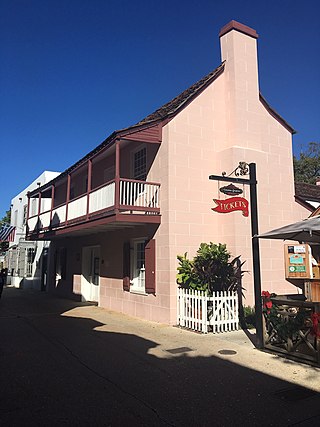
The De Mesa-Sánchez House is located at 23 St. George Street in St. Augustine, Florida. It is a restoration of a home dating back to East Florida's First Spanish Period.

The Pellicer-De Burgo House is located at 53 St. George Street in St. Augustine, Florida. It is a reconstruction of two connected houses built during the British Period (1763-1783) of East Florida.
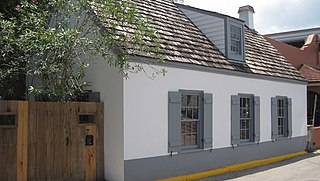
Elizabeth Towers (1899–1985) was an American philanthropist and socialite known for her dedication to historic preservation in northeast Florida.

Floridanos is a term for colonial residents of the Spanish settlements in St. Augustine and Pensacola who were born in Spanish Florida. Descendants of the original Floridanos can be found throughout the state, especially in St. Augustine, as well as in Miami, Tampa, and Orlando.
References
- ↑ Great Floridians 2000 : Francisco Pellicer CoSA: City of St. Augustine, Florida
- ↑ "Francisco Pellicer". Ancestry.
- ↑ "Francisco Pellicer". Waymarking.com. Retrieved 2014-03-28.
- ↑ "Eat | Colonial Quarter" . Retrieved 2018-12-11.